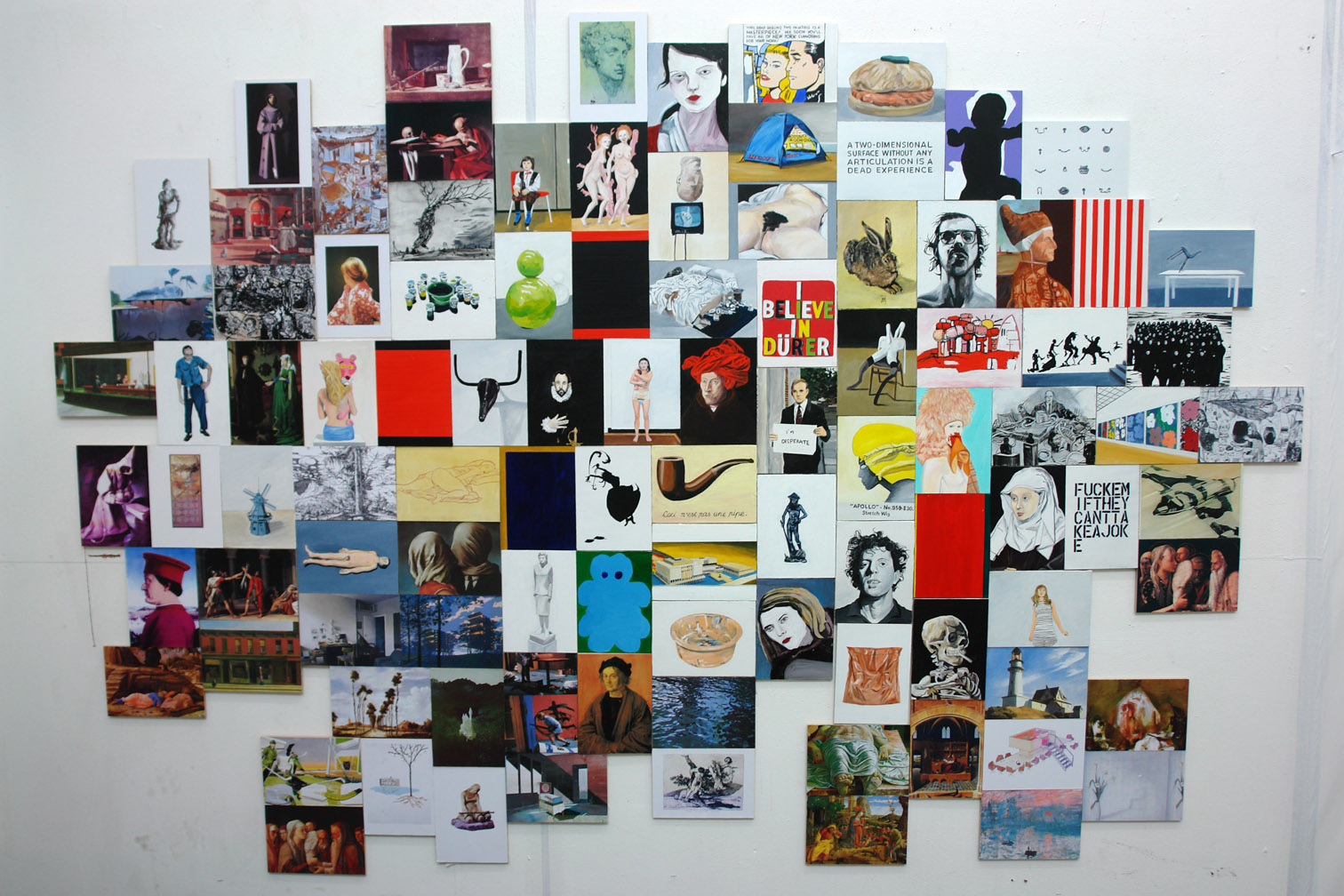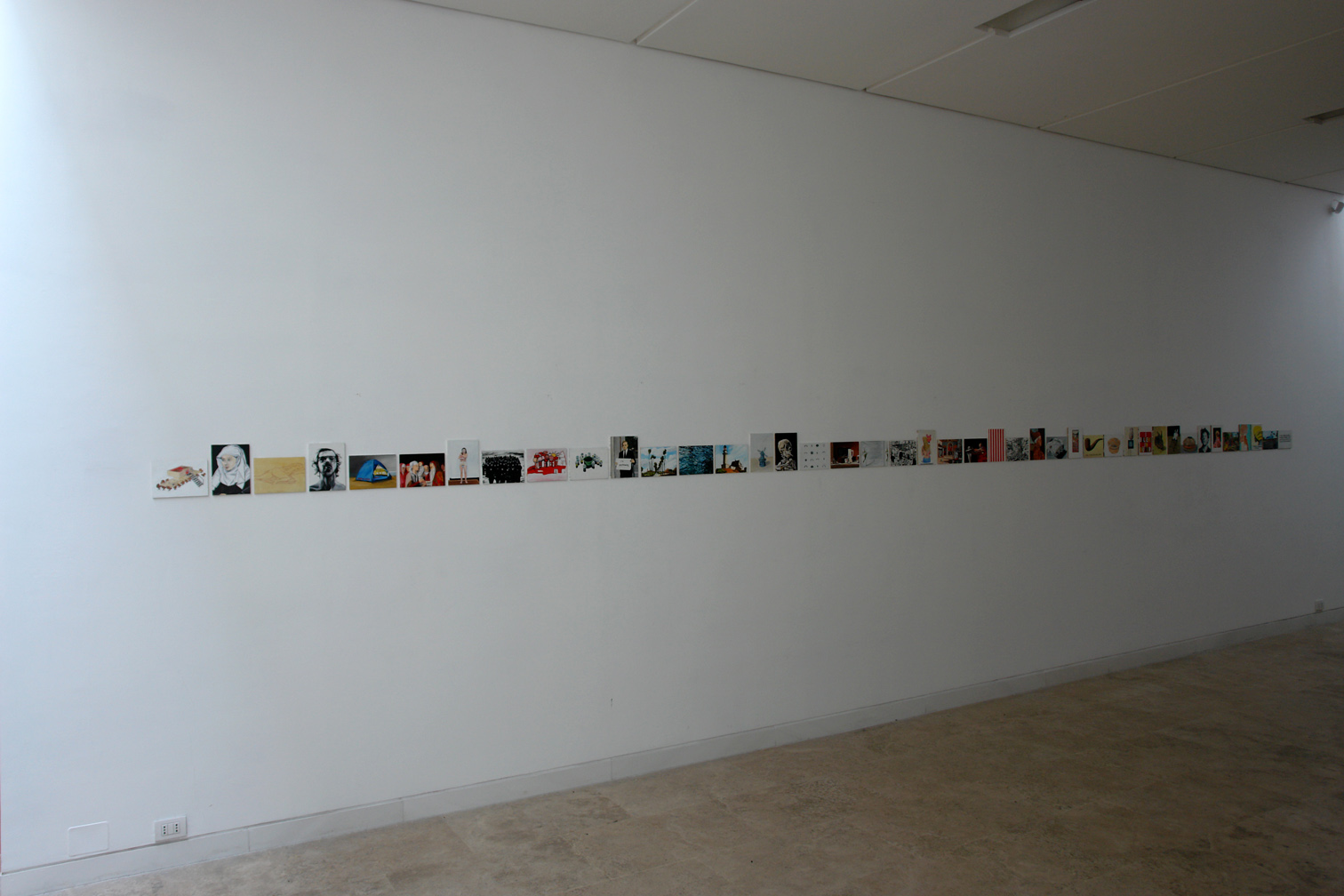home works texts biography publications archive links contact
EAMON O'KANE
Ideal Collection , installation views, acrylic on board, each 20.5x15cm, 2005-2009 - click on images to enlarge
Coming from a generation profoundly informed by the writing of Freud and Barthes, O’Kane knows that it is impossible for any of us to acknowledge all the sources of our creativity, since many are deeply embedded in unconscious memory, He opts for open revelation instead of pretending, as so many artists have done, that they achieved what they did single-handedly.
‘ I am interested in painting other peoples art work because I see it on several levels: first of all as becoming an incomplete (and perhaps impossible to complete) archive of my influences and a sort of patchwork quilt that has contributed to the construction of me as an artist. Nobody is without influence, especially in today’s image heavy society and especially in the art world. Artists look at other artists, both contemporary and historical, to find a path forward for themselves, and this series is showing all my cards in a way....by painting all the works - whether they are sculptures, photographs, installations, videos or paintings - in the same scale and in quite flat acrylic, they are all forced into the same parameters, which allows them to be scrutinized in a different way to looking at them in books and magazines.'
The process of painting the work of another artist, even in a very different medium, brings you inside the work in an entirely different way to the experience of simply looking at it. You become an ‘insider’ in the work, a partner now in every choice and every decision that led to the original image, albeit in a different context. The decision to replicate all that art history in postcard scale further imposes a measure of equality on the works and the artists that art criticism and museums steadfastly refuse to enable. As Walter Benjamin pointed out the reproduction becomes a leveller enabling us to bring things together that have been carefully segregated in their temples and treasure houses. It allows us to draw them into our domestic or studio spaces and to relate them to our lives and practices, to give them a meaning that works for us.
Catherine Marshall, 2008
© Eamon O'Kane 2009



